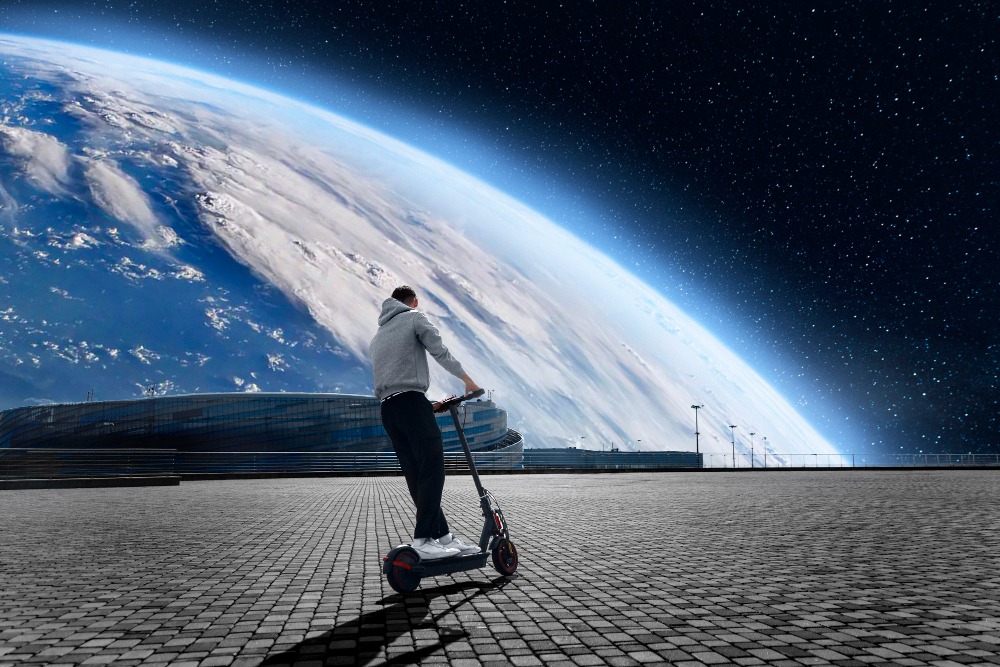Introduction
As humanity sets its sights farther into the cosmos, the role of technology in shaping the future of space exploration cannot be overstated. In 2024, a selection of cutting-edge technologies is poised to redefine our approach to space travel, pushing the boundaries of what’s possible and opening new horizons for human and robotic exploration alike. From propulsion systems that cut down travel time to distant planets, to innovative life support mechanisms ensuring safer and more sustainable journeys, these advancements are the cornerstone of tomorrow’s space missions. As we stand on the brink of this exciting frontier, let’s delve into the top 10 technologies set to transform space travel in the next year, promising to make the cosmos more accessible than ever before.
The Top 10 Cutting-Edge Technologies Set to Transform Space Travel in 2024
Space exploration is on the brink of experiencing significant advancements thanks to a slew of cutting-edge technologies poised to revolutionize how humans travel, live, and work in outer space. As we look ahead to 2024, several innovative technologies stand out for their potential to significantly advance space exploration. From harnessing new propulsion methods to developing sustainable living conditions on other planets, these advancements promise to make space travel more efficient, safer, and far-reaching.
# Advanced Propulsion Systems
Advanced propulsion systems are at the forefront of transformative space travel technologies. These systems, including ion thrusters, nuclear propulsion, and solar sails, offer significant improvements over traditional chemical rockets in efficiency, speed, and environmental impact. Ion thrusters, for example, leverage electrically charged gases to propel spacecraft with incredible efficiency, making long-duration missions more feasible. Meanwhile, nuclear propulsion promises to drastically reduce travel time to Mars and beyond, by utilizing nuclear reactions to generate immense thrust. Solar sails, harnessed from lightweight, reflective materials, capture momentum from solar radiation, offering an endless, fuel-free means of propulsion. These advancements could open up the solar system to more in-depth exploration and potentially interstellar travel in the future.
# Nanotechnology Applications in Space Exploration
Nanotechnology, the manipulation of matter on an atomic or molecular scale, holds vast potential for space exploration. Its applications range from creating more durable spacecraft materials able to withstand harsh space conditions, to developing nanosensors for in-depth planetary analysis. These tiny sensors could be deployed in swarms on alien worlds to collect extensive data on their environments, topography, and potential for life. Furthermore, nanotech-based systems are being developed for more efficient life support, capable of recycling air and water on long-duration missions far more effectively than current methods.
# Artificial Intelligence in Spacecraft Operations
Artificial Intelligence (AI) is poised to revolutionize spacecraft operations, making missions smarter, safer, and more autonomous. AI systems can process vast amounts of data from onboard sensors to make real-time navigational adjustments, detect system anomalies, and even carry out predictive maintenance to prevent failures before they occur. Additionally, AI-driven rovers and probes can independently make scientific discoveries and decide on the most pertinent areas of study, dramatically increasing the efficiency of planetary exploration.
# Lunar and Martian Habitat Development Technologies
As humans set their sights on establishing a permanent presence on the Moon and Mars, technologies for developing sustainable habitats on these celestial bodies are critical. Innovations in construction materials, such as using lunar regolith to 3D print structures or Martian concrete made from indigenous materials, are making these possibilities a reality. Additionally, scientists are exploring ways to create pressurized habitats that mimic Earth’s atmosphere and gravity, creating more comfortable and livable conditions for astronauts during extended stays.
# In-Situ Resource Utilization Innovations
In-situ resource utilization (ISRU) technologies are essential for the sustainability of long-term space missions. These technologies focus on utilizing local resources, like the Moon’s soil or Mars’ atmosphere, to produce water, oxygen, and even fuel. For instance, extracting water from lunar ice or producing oxygen from the Martian atmosphere could significantly reduce the need to transport supplies from Earth, thereby reducing costs and increasing the viability of prolonged off-world missions.
# 3D Printing for Space Infrastructure
3D printing, or additive manufacturing, is set to play a pivotal role in constructing space infrastructure. This technology allows for the on-demand production of parts and structures, drastically reducing the payload weight and costs associated with transporting materials from Earth. From building habitats and laboratories to creating essential tools and components for repairs, 3D printing in space promises to enable more versatile and resilient missions.
# Quantum Computing for Space Missions
Quantum computing offers unprecedented computing power and speed, which could revolutionize various aspects of space missions. This technology can significantly enhance data analysis, from better understanding cosmic phenomena to more accurate Earth observations. Additionally, quantum computing could improve communication security between Earth and spacecraft, protect against cosmic radiation, and optimize trajectory planning, making missions faster and more efficient.
# Robotics for Maintenance and Repair in Space
Robotics technology is crucial for the maintenance and repair of spacecraft and infrastructure in the harsh environment of space. Autonomous or remotely controlled robots equipped with advanced sensors and manipulators can perform routine checks, repairs, and even construct and maintain habitats and other structures. This drastically reduces the risks to human astronauts and increases the longevity and success of missions.
# Advanced Life Support Systems
Advanced life support systems are vital for sustaining human life during lengthy space missions. These systems manage everything from air quality and water recycling to food production. Emerging technologies are enhancing these systems’ efficiency and reliability, incorporating closed-loop ecosystems with higher recycling capabilities and even integrating hydroponic and aquaponic systems for fresh food production, drastically improving the quality of life for astronauts on long-duration missions.
# Space Debris Cleanup Technologies
As space travel becomes more frequent, addressing the growing issue of space debris is paramount for the safety of spacecraft and satellites. Innovative technologies such as lasers to nudge debris out of collision paths, nets and harpoons for collection, and even satellites designed to magnetically attract and remove debris are being developed. These technologies not only aim to mitigate the risks posed by space debris but also to ensure the sustainable use of space for future generations.
These ten technologies represent the cutting edge of what is set to transform space travel in 2024 and beyond. Each innovation brings us one step closer to overcoming the current limitations of space exploration, unlocking the potential for more ambitious missions, longer stays, and even the colonization of other planets. The coming years promise to be an exciting time for space exploration as these technologies mature and begin to redefine what is possible beyond Earth’s atmosphere.
Conclusion
As we stand on the brink of 2024, the future of space travel looks brighter and more feasible than ever before, thanks to remarkable technological advances. The technologies outlined in this post, ranging from reusable rockets to sophisticated AI and life support systems, are not just futuristic concepts but practical solutions underway to revolutionize space travel. They promise not only to make space exploration more sustainable and efficient but also to unlock new possibilities for human expansion and discovery beyond Earth.
The coming years will likely see these technologies move from development and testing phases to becoming integral parts of missions to the Moon, Mars, and beyond. As space agencies and private companies push the boundaries of what’s possible, the dream of making space travel accessible and routine is gradually becoming a reality.
In embracing these innovative technologies, we are not just venturing into the unknown; we are reshaping our understanding of the universe and our place within it. The journey ahead promises to be as thrilling as the destinations we aim to reach, marking a new era of exploration driven by human curiosity and ingenuity.


